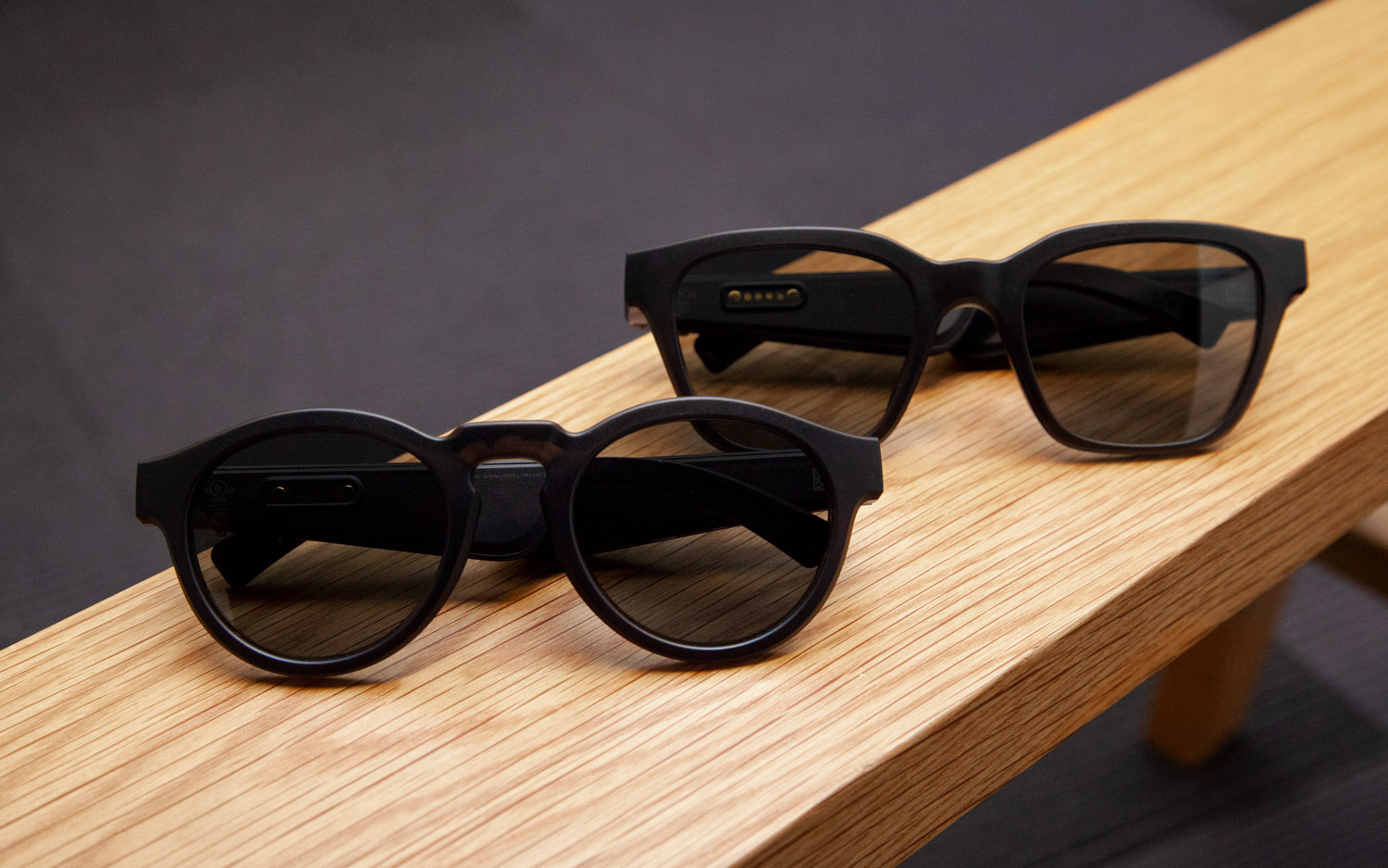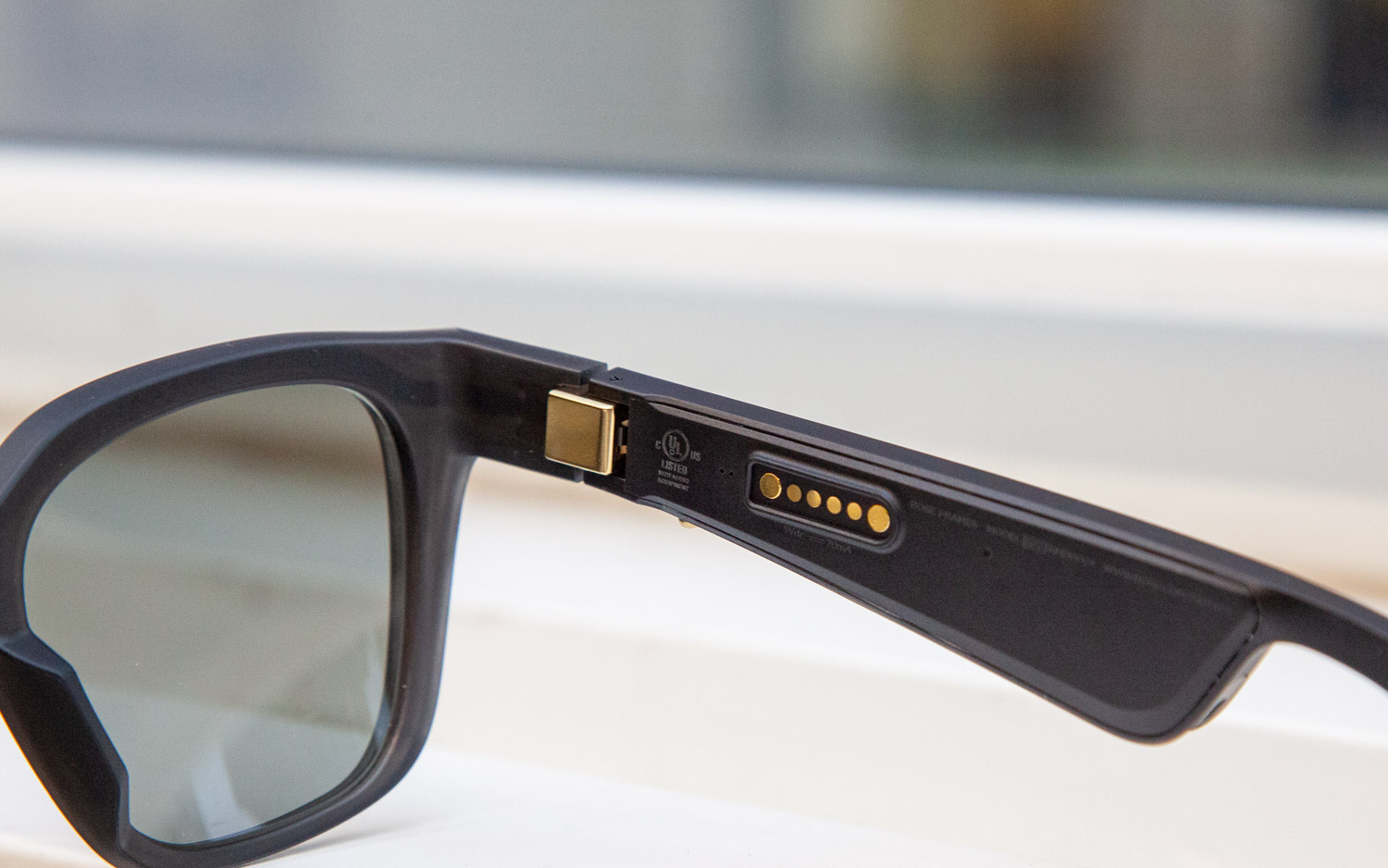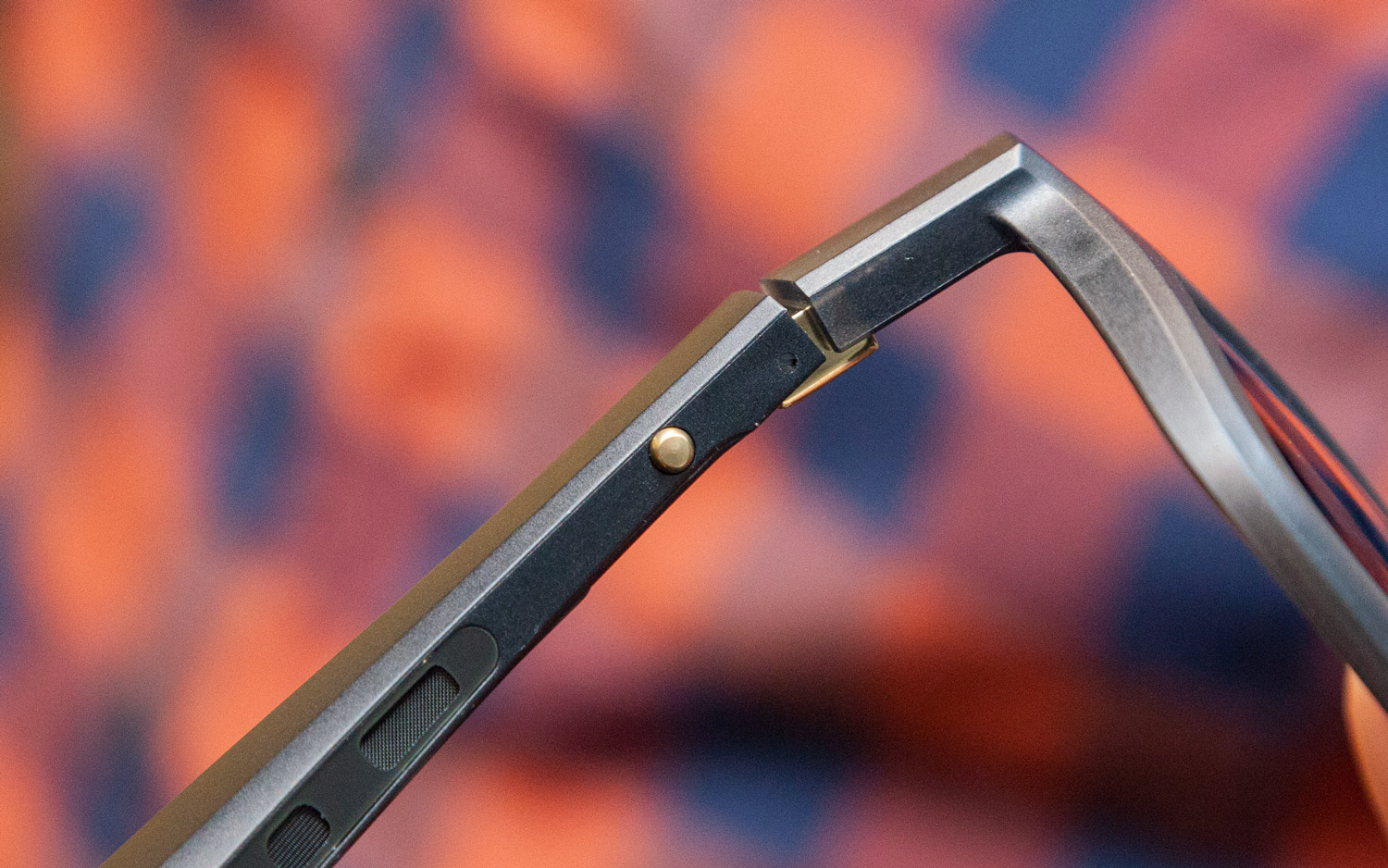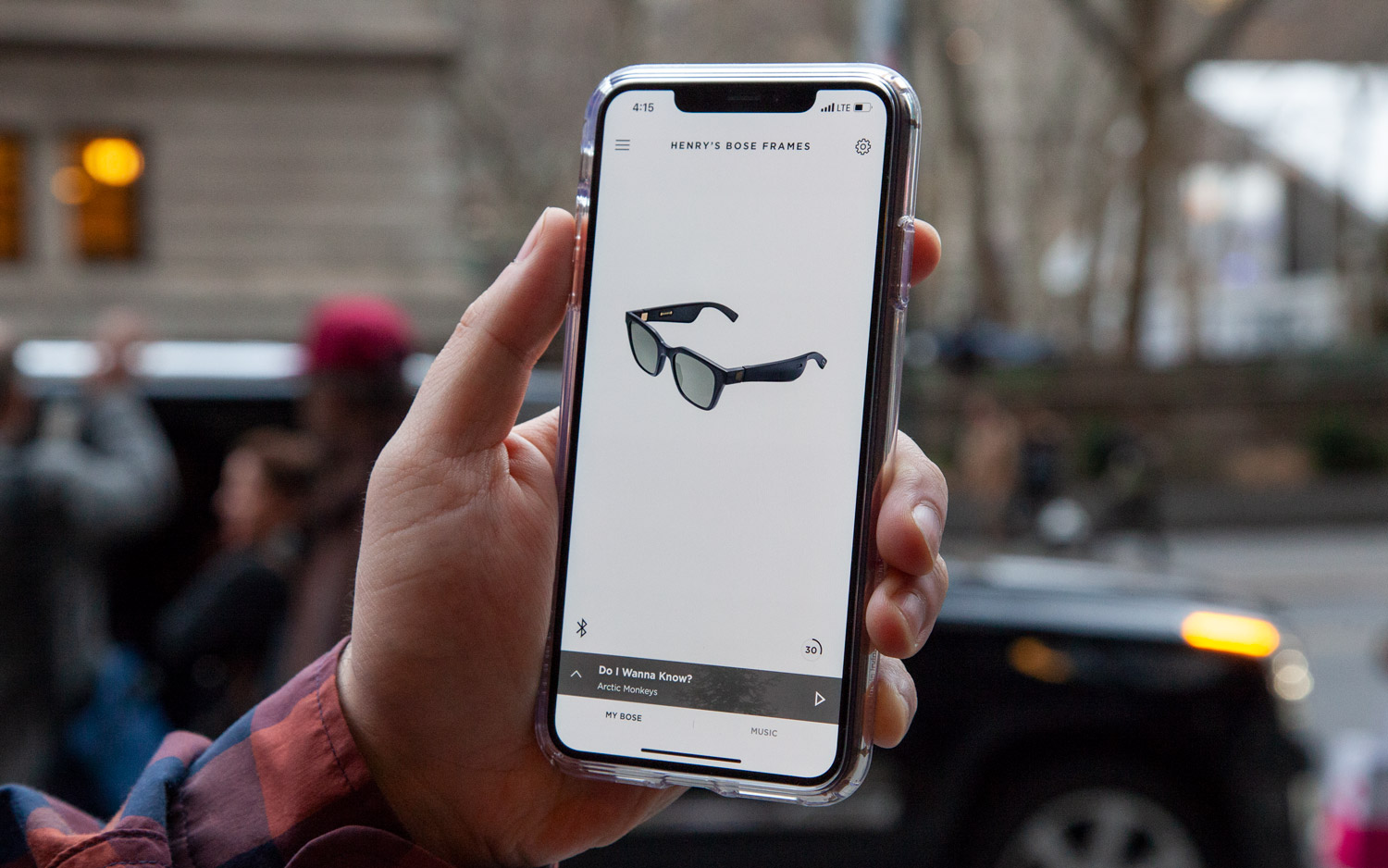Tom's Guide Verdict
More than meets the eye, Bose Frames are sunglasses that act as excellent headphones.
Pros
- +
Ingenius private audio
- +
Sweet audio quality
- +
Light, stylish design
Cons
- -
Relatively short battery life
Why you can trust Tom's Guide
March 27 Update: Bose Frames are getting a prescription lens option, as Glasses USA is producing lenses for the wearable, more details below.
Wearable smart glasses have been interesting, but they've never been cool — until now. The Bose Frames sunglasses ($199, available now) are a stylish pair of headphones, except they don't go in your ears.
Yes, even though it just looks like I'm walking around wearing a nondescript pair of shades, I'm actually rocking out to my favorite songs. Or am I catching up on my stack of podcasts? Nobody but the person wearing the Frames knows, and that's what's so awesome.
Design
Bose Frames come in two styles: the boxy, slightly larger Alto and the circular, slightly smaller Rondo. Neither look like they're packing any special tech, which is what puts them ahead of every other pair of go-go-gadget glasses. They don't call attention to themselves, keeping in the tradition of that special breed of sunglasses that provide an effortless cool.

But since they're sold only in black, you can't get the Altos without looking like you stole a pair of upscale 3D movie glasses. Fortunately, their matte finish and gold-plated, steel hinges provide a hint of classiness, and they're visually indistinguishable from regular shades, making them much closer to an average pair of Warby Parkers than the bulkier Snapchat Spectacles, Vuzix Blade and original Google Glass.
A small metallic-gold button on the right arm, near the hinge, is the only control on the Frames, which charge via a proprietary pogo-style pin on the right arm. Yes, USB Type-C would have been nice, so you could charge the glasses with the same cord you use for your phone or laptop. But with this lightweight design — they're a mere 10 ounces — I can't really complain.
The gold button is so small that it might take some getting used to before you stop accidentally clicking it, which many of my colleagues did.
Audio Quality
As I passed the Bose Frames around the Tom's Guide office, the glasses garnered the most impressed reactions I've ever seen. Not only did the Frames' teeny, tiny speakers — hidden inside its arms — shock people who didn't think I was listening to anything, but multiple colleagues were also surprised by the high quality of the sound coming from the Frames.

The drums of Idles' "Television" kicked with appropriate force; the horns of Peter Gabriel's "Sledgehammer" sounded sweet, and Maren Morris' vocals on "The Middle" came out accurately. Not that we should be surprised: Bose is one of the few companies with a high enough pedigree in audio quality that you'd expect inventiveness and ingenuity on this scale.
As I passed the Bose Frames around the Tom's Guide office, the glasses garnered the most impressed reactions I've ever seen.
The jams even continued as I walked around NYC, though I had to pump up the volume to maximum. After I made that slight adjustment — I'd kept the glasses at medium in our office — I was bopping down the street, with my own personal soundtrack ambiently filling in the air around my ears.
MORE: Wearables - Wearable Technology News and Reviews
Of course, the Frames' sound can get muffled in louder areas, as I noticed when trains entered and exited a subway station. If you want noise cancelling, you're better off with the Bose QuietComfort 35 II, though you'll pay $120 more.
Privacy: Party of one
Thanks to some ingenious proprietary tech, the Bose Frames avoid blasting their audio for all around you to hear. Instead, Bose engineered the new speakers, from scratch, into the temples of the glasses, creating a privacy bubble that Bose Frames director Mehul Trivedi told me directs 99 percent of the sound to the user, with just 1 percent leaking out.

To get technical for a second, Frames send the sound to the direction of your ears with a "variable length dipole system" while cancelling the sound waves "propagating in other directions."
Putting that ingenuity to the test, I listened to Skrillex's hyper-obnoxious EDM track "Bangarang" at my desk. I asked my colleague sitting diagonally opposite from me if she could hear it. "Hear what?" she replied, which I took as a success.
Next, I walked into a fast food shop and ordered a milkshake. After I made my order (all the while listening to Carly Rae Jepsen's "Party of One"), I asked if the clerk could hear "these," as I pointed to my sunglasses. Her response? "No, I … wait what?" So, I handed her the Bose Frames and watched as her expression shifted from suspicion to confusion to excitement. "Those are crazy," she said.
As I walked around the Tom's Guide office, seeing if anybody else could hear the music coming from the frames, I kept getting that same series of reactions: suspicion, confusion and excitement. That roller coaster of emotion was best expressed by Tom's Hardware Editor Andrew E. Freedman, who said, "That was so weird. That may have been one of the coolest things I've seen since I've started working here." Another colleague simply shouted, "Those are bonkers!"
I asked if the clerk could hear "these," as I pointed to my sunglasses. Her response? "No, I … wait what?" So, I handed her the Bose Frames and watched as her expression shifted from suspicion to confusion to excitement.
Audio can leak out to a level others can hear, though, if you push the Frames' volume. In a quiet, close-quarters area, if you turn up the volume to 75 percent or louder, those around you will know there's music coming from your glasses. It's still not nearly as obnoxious as when people listen to music on their phones in public, though.
Controls, App and Calls
You'll perform most of your actions using the tiny button on the right arm of the Frames. A single tap can re-pair the glasses with your phone, as well as pause and play the audio you're listening to. Much like with the in-line remote button on many headphones, a double-click will advance to the next song, and a triple-click rewinds.

Bose onboards new users with Bose Connect, its app that manages Bluetooth connections and integrates with Apple Music and TuneIn Radio, among other features. You don't need to use this app all the time, though, as the Frames pair over Bluetooth, so you can listen to everything from your podcast app to YouTube.
That ability to use Bose Frames with whatever platform you want reminds me of the limitations of Spectacles, which aren't meant to be used with other social media apps.

When I held down the Frames button for a long pause, that action triggered Siri (Google Assistant is also supported). The tiny microphone in the frames sent my request — "Siri, what time is it?" — to my iPhone, and the assistant answered.
You can also receive calls on the Bose Frames, by simply clicking the multifunction button. Testing this feature on a call with Tom's Guide writer Adam Ismail, I clearly heard him raving about the film Dragon Ball Super: Broly, and he confirmed that the microphones picked up my voice at a clear, audible level.
MORE: Best Headphones and Earbuds for Enjoying Music
Oh, and if you want to turn the Frames off? Just place them upside down on a surface.
Bose AR Got Here Late, Isn't Standard AR
For me, and what I want, the Bose Frames are almost perfect. I just want Bose to offer prescription lenses. Still, the Frames launched without the entire package I experienced at SXSW 2018.
At SXSW 2019, though, Bose AR apps launched, and I got to try demos of upcoming experiences from companies such as New Balance and Aira (a firm that helps the blind and visually impaired navigate life). At that event, Bose also revealed that its AR apps are coming to the QC 35 II headphones.
Some of my colleagues balked at Bose's use of the phrase augmented reality for a product without a visible user interface that appears in your field of vision. But I'm allowing it on a technicality. The audio coming from the arms of these glasses does augment your reality, adding content in a near-seamless way.
MORE: Best VR Headsets
I look forward to updating this review with my experiences with the launched Bose AR apps, which include one for getting step by step directions and a couple focused on interactive storytelling experiences. There's even an app for golfers, if you're looking for advice while you hit the links.
Frames As Sunglasses
The Bose Frames are decent, capable sunglasses. I noticed this as they reduced the glare of the overhead fluorescent lighting in our office. The lenses are uniformly tinted and block "up to 99 percent of UVA/UVB rays," according to Bose.
When I originally asked Trivedi about prescription-lens versions, he said Bose has been "asked about this a lot" and that the company should have news about it "soon." (I wear glasses and don't have contacts, so testing these was a fun mix of looking goofy with two pairs of glasses on and walking around practically blind.)
On March 19, GlassesUSA.com announced it would sell prescription lenses for Bose Frames, with single-vision lenses starting at $29, with free shipping. Bose isn't involved with this offer, and you'll have to snap the lenses in yourself, and I'll update this review once I've had the chance to try this process out for myself.
Battery Life
According to Bose, the Frames are rated for up to 3.5 hours of audio playback and 12 hours of standby, and they charge fully in less than 2 hours. I haven't hit empty during my hands-on time so far, but I don't think I've spent more than 3 hours jamming out. I'll provide updates if this changes during my time with Frames.
Bottom Line
Too often, companies trot out seriously interesting tech at conventions and festivals, tech that never hits the shelf. While Frames still have a promise to fulfill with the Bose AR platform, they've already proven a lot to me and sent a message to the industry: Deliver on your ideas and break the vaporware trends.
And even better, Bose has made a consumer product, something that will make anyone with a smartphone say whoa, unlike the Microsoft HoloLens and the Vuzix Blade, which are firmly targeted at enterprise markets. And with their sleek, low-key look and functionality that isn't tied to any one app, the Frames are a wearable I could wear each and every day and not leave on the shelf next to my Spectacles.
The Bose Frames are the coolest headphones you didn't know you needed, and their $199 price places them within (relative) reach. Now that I've had a chance to try them on and take them for a spin, without being on a guided tour, as I was last year, I've gained a serious respect for Bose for making Frames a reality.
Credit: Tom's Guide

Henry is a managing editor at Tom’s Guide covering streaming media, laptops and all things Apple, reviewing devices and services for the past seven years. Prior to joining Tom's Guide, he reviewed software and hardware for TechRadar Pro, and interviewed artists for Patek Philippe International Magazine. He's also covered the wild world of professional wrestling for Cageside Seats, interviewing athletes and other industry veterans.
-
techguy7170 No way in hades that this should be considered augmented reality. Perhaps 'Enriched Reality.' Or 'Informed Reality.' There is no augmentation of reality here, and I disagree wholeheartedly with your 'exception.' We're talking about Magic Leap, Microsoft, Vuzix - the entire idea that these glasses, which are essentially headphones, are in the same boat as true AR glasses is laughable.Reply
Plus, they still look like crap. Someone make some AR glasses that people actually want to wear, eh? -
romigr I purchased a set of Bose Frames to use while watching TV. My hearing is impaired and streaming through my hearing aids did not give me good sound quality. The Frames sound great, but there is one major problem: I can't control the volume. My Dish Network Joey set-top box lacks a volume control for its Bluetooth output. Surprisingly, Bose confirms that the Frames have no way to control the volume either. Foolishly, I ordered a set of prescription lenses for the Frames before they arrived. So, I have a $500 set of clunky glasses with built-in FIXED VOLUME earbuds.Reply

